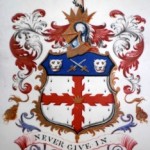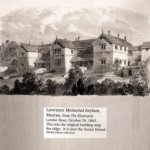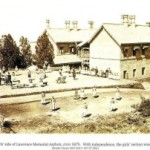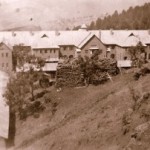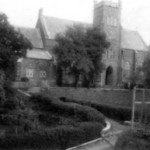Sir Henry Lawrence was the force behind the Lawrence Schools of South Asia. He was born in 1806 in Ceylon (presently Sri Lanka) and educated at Folye College Derry and then Addiscombe Military Seminary. He joined the East India Company, rising to the rank of Brigadier General in the Bengal Artillery.
While engaged in matters of concern to the British Raj like the revenue system, the canal system, and roads, the worry that was always with him was the future of the orphans of British soldiers. This worry took the form of the four asylums:
- Sanawar 1847
- Lovedale 1858
- Mount Abu 1857
- Ghora Gali 1860
The Sanawar and Mount Abu were constructed and commissioned in the life time of Sir Henry Lawrence, while Ghora Gali came into being in his memory, with a major contribution from his family.
Before 1920, the School Crest used to be an eagle poised for flight, with the motto ‘Onwards and Upwards’. The present logo is an adaptation of the Lawrence Coat of Arms, granted to the College in 1926, by Sir Alexander Hutchison Lawrence, the eldest son of Sir Henry. “Never Give In” is the motto of the College, being the last instructions of Sir Henry Lawrence while dying at the Lucknow Residency.
The Intricate History
The construction work of the asylum began in 1859 on the top of Ghora Gali hills. This building of Lawrence Asylum was near the present Junior School. By l860, the construction was completed and the building was occupied. It was used as a hostel for both boys and girls. But later on, due to lack of accommodation for the students, construction of a new hostel for the girls began in 1867. This building is now known as Prep School. In 1868, the construction was completed and the building was brought operational. In 1869, a committee was set up to inspect various asylums of India, and their job was to avoid the construction of new buildings as they were not having a good financial condition. Lord Napier visited the asylum in 1873 and suggested that a new building should be erected to increase the accommodation because condition of the asylum was satisfactory.
Selection of a site for the chapel was conducted in 1878. Before this, the girls’ hostel was being used for divine services. In the same year, headmaster’s house was constructed. The year 1878 proved to be the year of the buildings. In 1881, the construction of the chapel began and the first stone was laid by the Bishop of Lahore. A small hospital, boys’ work-shop and a rifle range were built in the Year 1891.
Strength
- In July 1862, the strength of Asylum was 82
- The new Girls’ school (present Junior School) was completed in 1868. The old building was named Boys’ School and it accommodated 71 boys. Girls School accommodated 54 girls. Thus the total strength of the asylum in 1868 was 125.
- On 1st April, 1872, the strength of the asylum was 124, including 70 boys and 54 girls.
- In 1878, strength of the School was 150; 85 boys and 65 girls.
- In 1894, the total strength of the College increased to 171.
